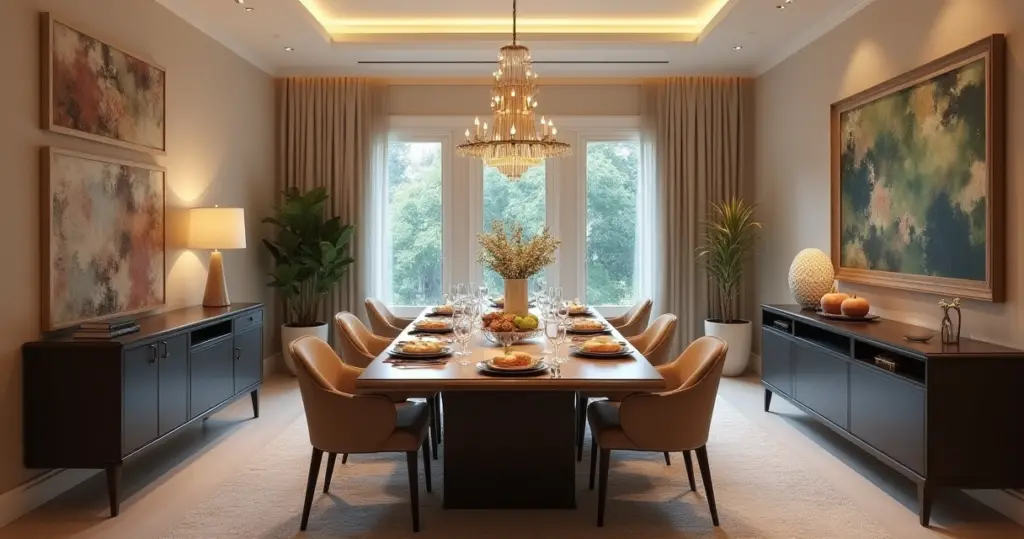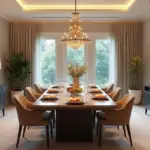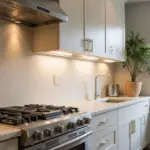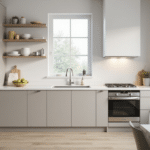Can we talk about the “formal dining room” for a second? You know the one. It’s that museum in your house with the fancy table nobody’s allowed to touch and chairs that are more about looks than comfort. It sits there, collecting dust, used maybe twice a year, taking up precious real estate in your home. That’s my biggest pet peeve. A home is a living ecosystem, not a showroom, and every single room should be working for you, nourishing you, and feeling vibrantly alive.
Your dining area—whether it’s a whole room or just a corner of your kitchen—is the heart of your home’s nourishment. It’s where you connect with family, share stories, and, well, eat the food that fuels your life. So let’s stop treating it like a fragile antique. I’m going to walk you through how to design a space that’s not just beautiful and functional, but that truly feels like a living, breathing part of your home. Forget the corporate jargon; this is what actually matters.
Foundational Planning & Strategic Design
Okay, before you even think about buying a table or picking a paint color, we need to get the foundation right. This is the part everyone wants to skip, and it’s where all the mistakes happen. Think of it like amending the soil before you plant a garden. A little prep work here makes everything that comes after a thousand times easier and more successful.
1. Determine Your Dining Room’s Primary Function for Optimal Design
First things first: What is this space really for? The biggest BS line in design is that a dining room is only for formal dining. Forget that. I once had a client with a stunning formal dining room that her kids were terrified to enter. It was a dead zone. We threw out the rulebook and asked what they actually needed. The answer? A space for weeknight family dinners, a weekend craft explosion zone, and a sunny spot for her to start her vegetable seeds in early spring.
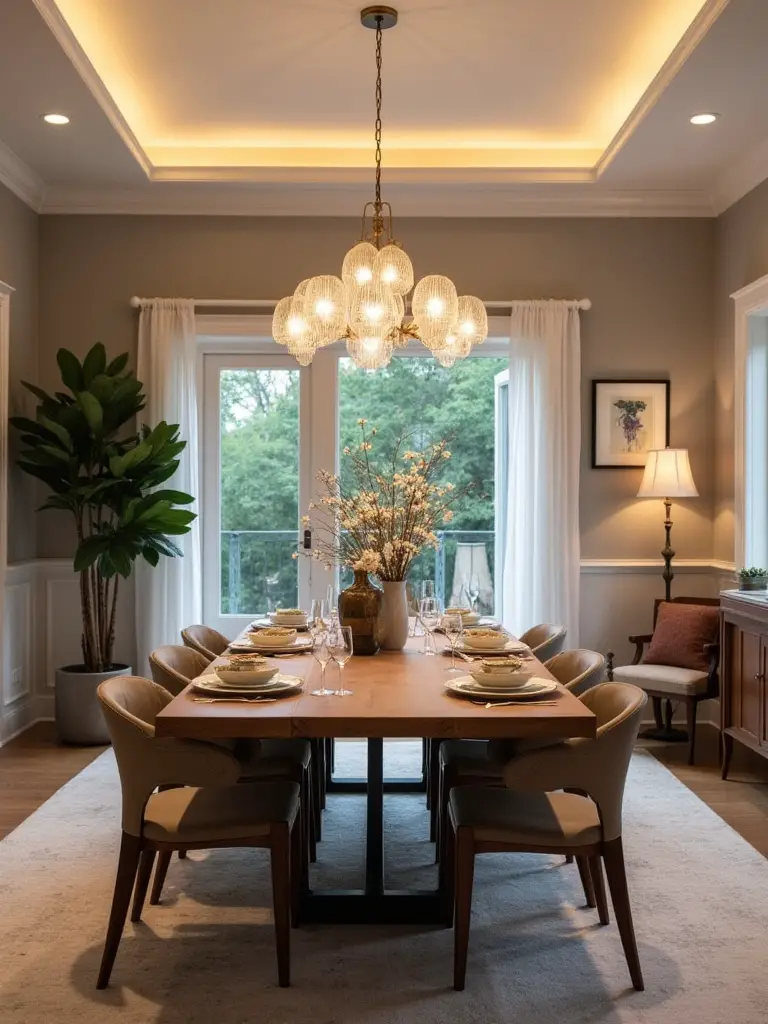
So, get real with yourself. For the next week, notice how you use—or wish you could use—that space. Is it for homework? Puzzles? Working from home? Maybe it’s where you want to repot your houseplants. Make a list, and be honest. A dining room that hosts daily meals and doubles as a seed-starting station is infinitely more valuable than one that sits empty waiting for a holiday that might not even happen at your house this year. This honesty is your design compass.
Now that you know what you’ll be doing in the space, let’s make sure you can actually move around in it.
2. Map Out the Ideal Layout with Measured Furniture Placement
People love to fall in love with a giant, rustic table at the store, buy it, and then realize they have to suck in their gut and shuffle sideways to get around it. Don’t be that person. You need to map out your space with cold, hard numbers before you spend a dime. The most important number to remember is 36 inches. That’s the minimum clearance you want between the edge of your table and the walls or other furniture. If it’s a major walkway, aim for 48 inches. This is non-negotiable if you want a room that doesn’t feel like a crowded elevator.
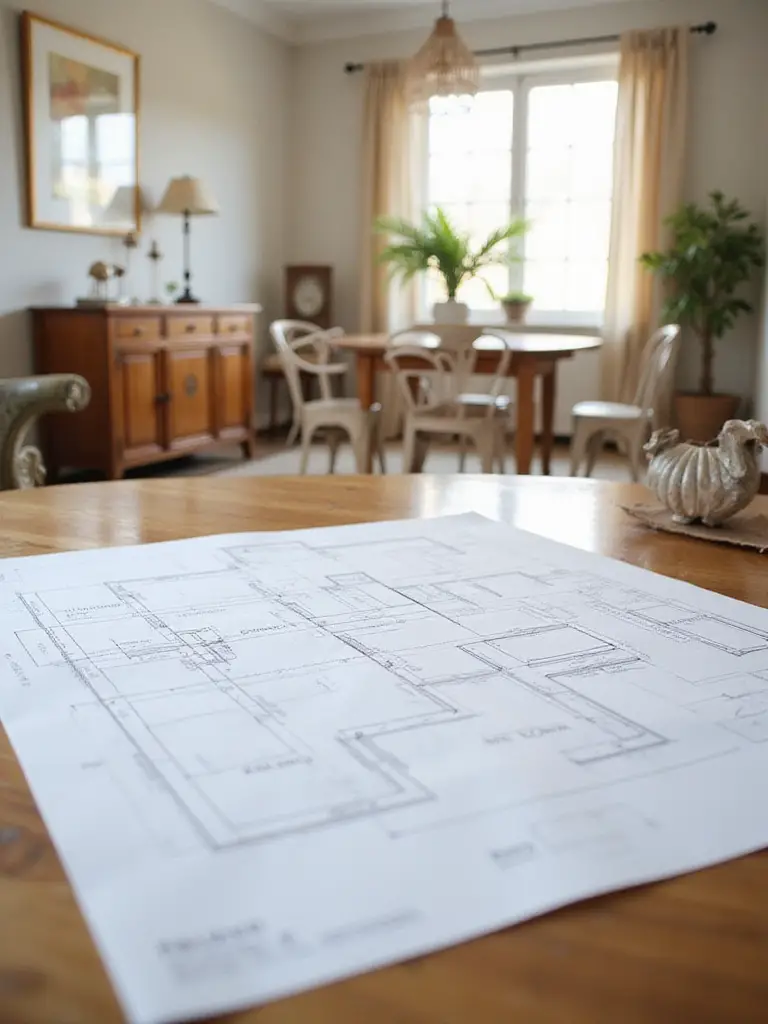
Here’s the shortcut I wish I’d known earlier: painter’s tape. After you measure your room, use painter’s tape on the floor to mark out the dimensions of the table you’re considering. Then add tape for the chairs, a buffet, whatever. Live with it for a day. Walk around it. Pull out an imaginary chair. You will know instantly if it works. This five-minute trick has saved my clients thousands of dollars and endless frustration. It’s the best reality check there is.
With a practical plan for your furniture, you can start thinking about the fun part: making it look good.
3. Define a Cohesive Design Style to Guide All Decor Choices
“Design style” sounds so fussy, but it’s really just about choosing your vibe so you don’t end up with a room that gives you a headache. Are you drawn to the warm, earthy feel of reclaimed wood and linen? The clean lines of mid-century modern? A more bohemian look with lots of plants and textures? There’s no right answer, but you have to pick a lane. This is what keeps you from buying a sleek industrial light fixture for your rustic farmhouse table and wondering why it looks so… weird.
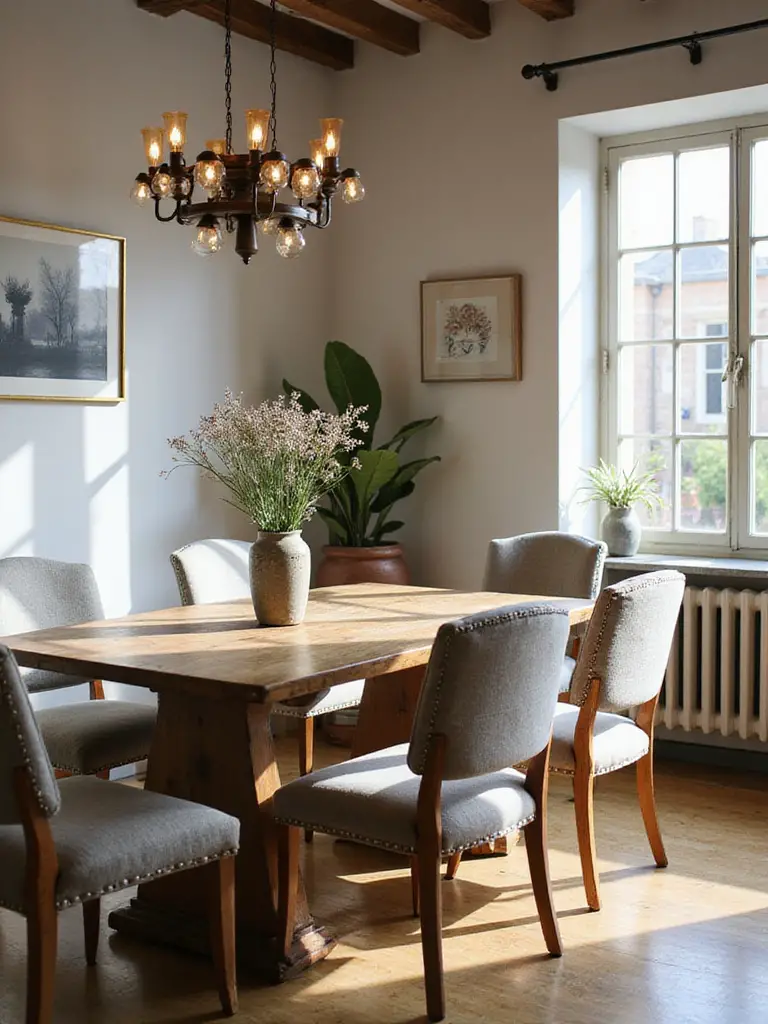
Your shortcut here is the mood board. I know, it sounds a little extra, but trust me. Use Pinterest or just rip pages out of magazines and stick them on a piece of foam core. Don’t overthink it. Just gather images of rooms, colors, plants, and textures that make you feel good. After a week, look at your collection. You’ll see patterns. Maybe it’s all light wood, or a specific shade of green, or tons of woven baskets. Boom. That’s your style guide. It’s your secret weapon against impulse buys.
Once you’ve got your vibe in mind, it’s time to look at the single most important element in any living space: light.
4. Evaluate Natural Light to Optimize Window Treatment Selection
Light is life. For you, for your plants, for the whole energy of your home. Before you do anything else, just sit in your dining area at different times of day. Where does the light come from? Is it a soft, gentle glow from a north-facing window, perfect for nurturing a fern? Or is it a harsh, blazing afternoon sun from a west-facing window that will fry your basil plant and give your dinner guests a sunburn? Understanding this is everything.
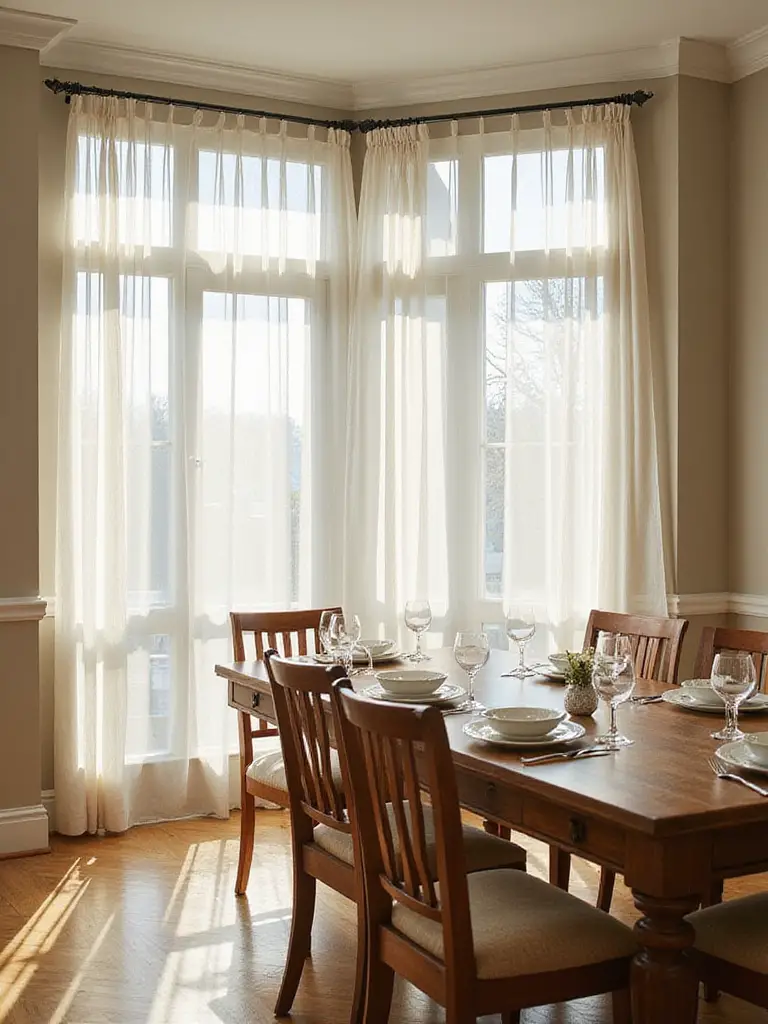
The light will tell you what the room needs. Harsh glare? You’ll want light-filtering shades or sheer curtains. Not enough light? You’ll need to choose plants that can handle lower-light conditions, like a ZZ plant or snake plant. My confession? I used to think any window was a good window. Then I tried to grow sun-loving tomatoes in an east-facing apartment window and ended up with sad, leggy green sticks. The light dictates what can live there, and your design should respect that. Your window treatments aren’t just decoration; they’re the control dial for the room’s energy.
With a handle on your natural resources, let’s talk about your financial ones.
5. Allocate Your Decorating Budget Strategically for Key Pieces
Okay, let’s talk money. You don’t need a huge budget, but you do need a smart one. Here’s the deal: Put your money where your butt is. And where your food is. That means the most significant chunk of your budget should go to the two things you use every single day: the table and the chairs. These are your investment pieces. They need to be durable, comfortable, and built to last. A wobbly chair or a table that scratches if you look at it wrong will make you miserable.
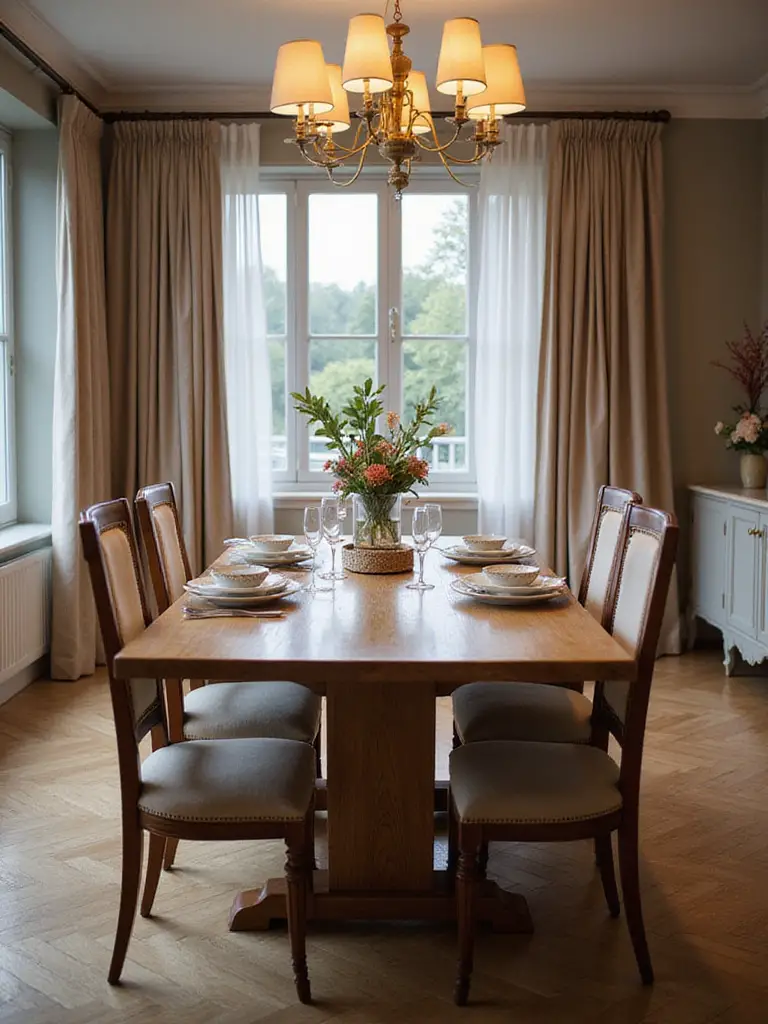
Everything else? You can get creative. The rug, the art, the centerpiece, the lighting—you can find amazing, affordable options for all of these. Think of it like cooking: you buy the best quality protein or vegetables you can afford, and then you use spices and herbs to make them shine. The 80/20 rule applies here: spend 80% of your money on the 20% of items that do all the heavy lifting (your table and chairs). You’ll get a room that feels high-end and will last for years, without breaking the bank.
Furnishing Core Elements & Essential Fixtures
The plan is set, the budget is allocated. Now it’s time to start bringing in the big pieces that will anchor your living, breathing dining space. This is where your ecosystem starts to take shape.
6. Select the Perfect Dining Table Size and Shape for Your Space
The table is the trunk of your dining room tree—everything branches out from here. After using your painter’s tape trick, you should know the perfect dimensions. Now think about shape. A round table is fantastic for conversation and flow in a smaller or square room; everyone can see each other, and there are no sharp corners to bump into. A rectangular table is a classic for a reason—it’s great for larger groups and fills a long, narrow room beautifully.
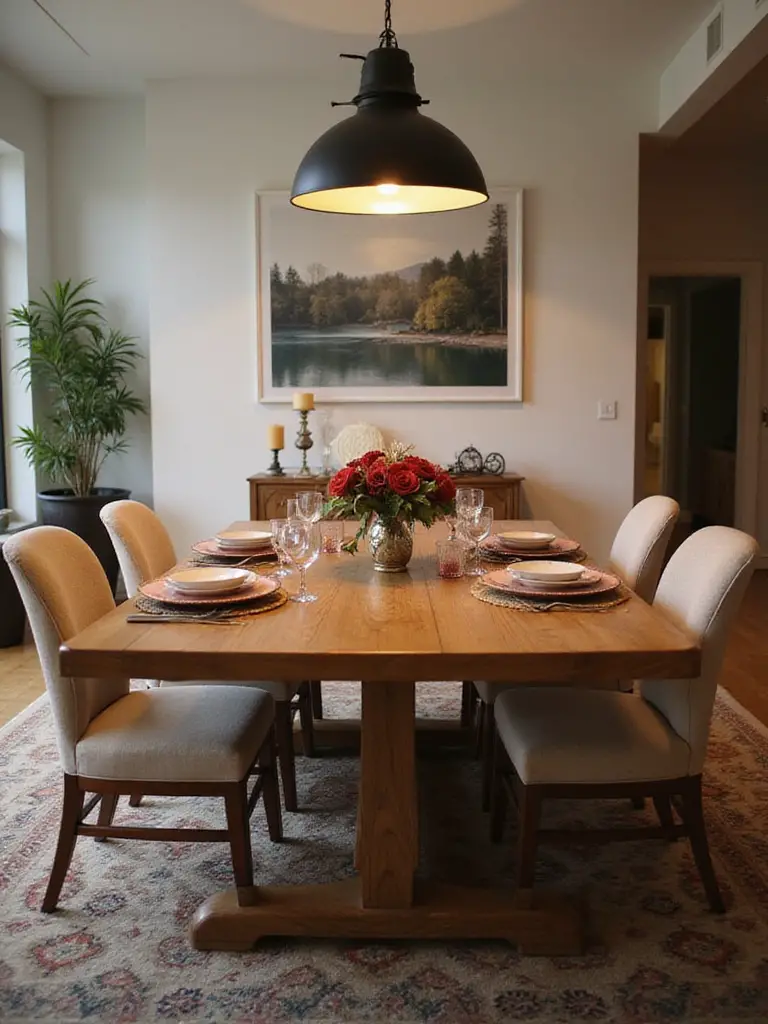
And don’t forget to think about the base! A pedestal table, with one central leg, is a space-saving miracle. You can squeeze in more chairs without people banging their knees on table legs. I had clients in a tight condo who were convinced they could only fit four people. We swapped their clunky four-legged rectangle for a sleek round pedestal table, and suddenly they could comfortably seat six. It completely changed how they used the space.
Your table needs companions, so let’s talk about the chairs.
7. Choose Comfortable, Ergonomic Chairs That Complement Your Table
Please, for the love of all that is good, choose comfortable chairs. I don’t care how cool they look; if you can’t sit in them for more than twenty minutes without your back starting to ache, they have failed. An amazing meal and great conversation can be completely ruined by a chair that feels like a medieval torture device. A dining room is for lingering, and you can’t linger if you’re in pain.
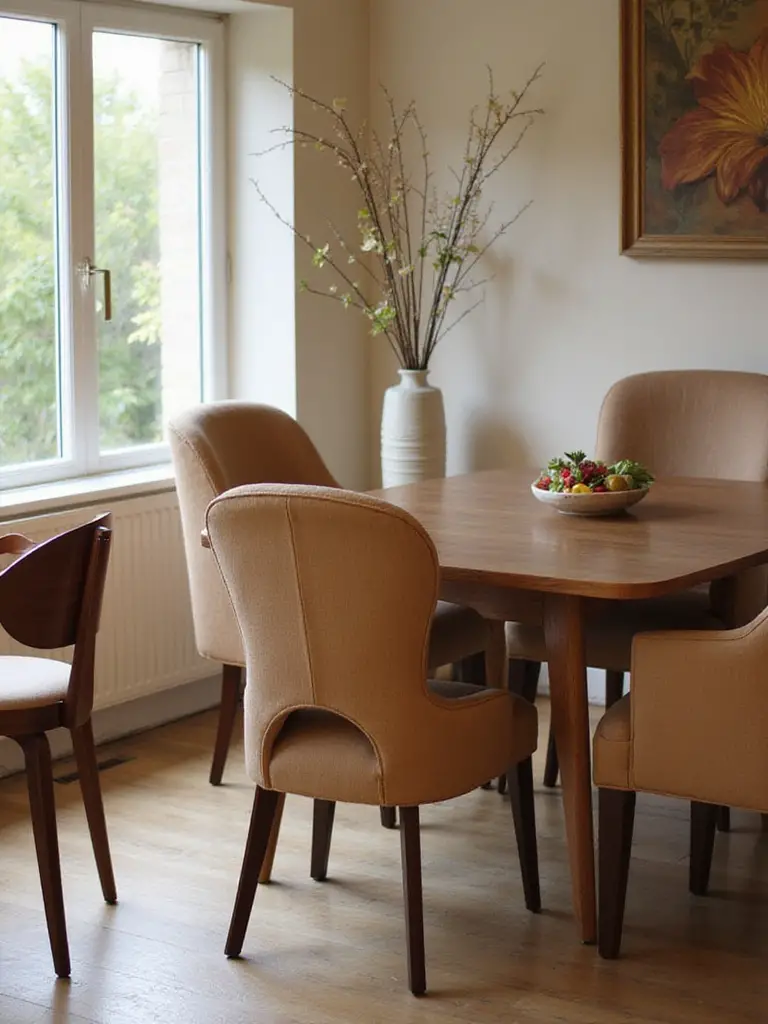
Here’s your shortcut: test drive your chairs. If you’re in a store, sit in one for at least five minutes. Slouch a little. Sit up straight. See how it feels. Check the height against your table at home—you want about 10-12 inches between the top of the seat and the bottom of the tabletop for happy legs. And a confession: I once bought a set of gorgeous vintage metal chairs for my own home without testing them. They looked amazing. They were also freezing cold in the winter and made everyone want to flee the table after 15 minutes. I eventually swapped them for upholstered chairs, and suddenly, our dinners started lasting for hours. Comfort creates connection.
Now that we can sit comfortably, let’s make sure we can see each other.
8. Install the Right Overhead Lighting for Ambiance and Function
Lighting is the mood-setter. It’s the difference between a sterile cafeteria and an intimate bistro. The most common mistake is having a single, blazingly bright light source that illuminates the room like a surgical theater. You need layers, and you absolutely, positively need a dimmer switch. This is not a suggestion; it’s a requirement. A dimmer allows you to have bright light for homework or cleaning, and a soft, warm glow for a relaxing dinner.

Your overhead fixture—a chandelier or pendant—should be about 1/2 to 2/3 the width of your table and hang about 30-36 inches above it. This creates a cozy, defined zone of light over the meal. Think of it as a little pool of warmth that encourages people to lean in and connect. And use warm-toned bulbs (look for 2700K on the box). It’s the closest you’ll get to candlelight and makes everyone look and feel better.
Of course, a beautiful table needs to stay clear of clutter. That’s where storage comes in.
9. Incorporate a Functional Storage Piece Like a Buffet or Credenza
A buffet or credenza is the unsung hero of the dining room. It’s the hardworking support system that lets the rest of the room look effortless. This is where you hide everything that would otherwise clutter up your table: placemats, napkins, fancy serving dishes, extra candles, the kids’ craft supplies. Out of sight, out of mind.
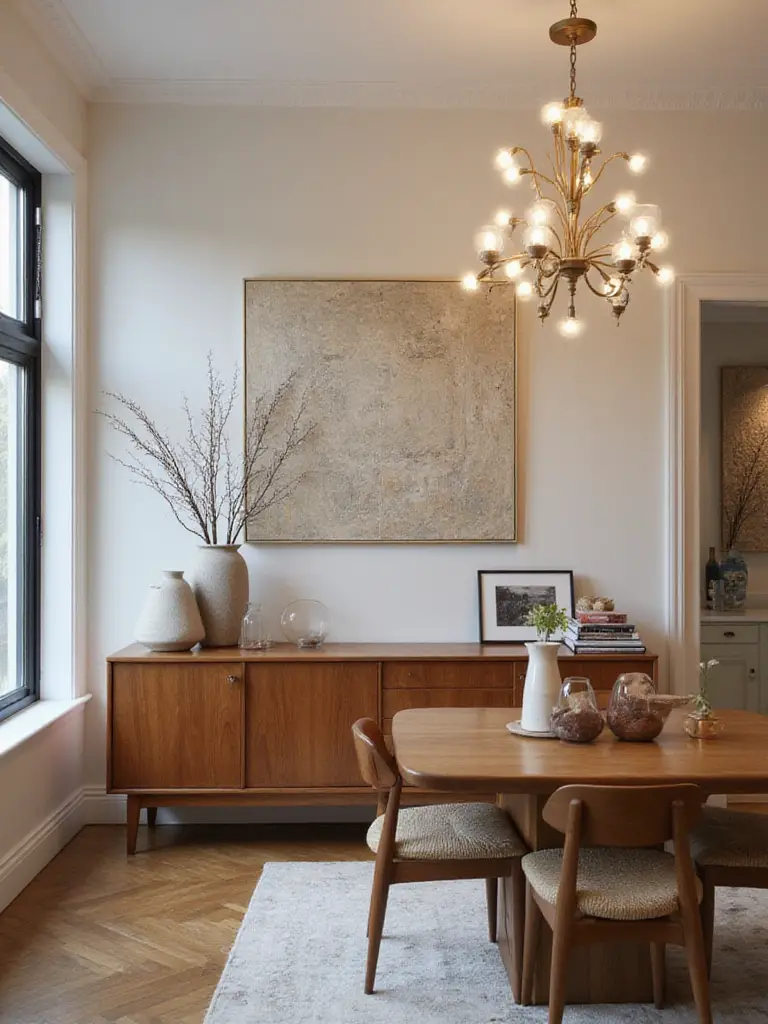
But it’s more than just a glorified cupboard. During a party, it becomes your serving station, a bar, a dessert buffet—freeing up your dining table for the main event. Look for one that complements your table’s style but doesn’t have to be a perfect match. I love mixing a rustic wood table with a sleeker, more modern credenza. The key is to find one with the right kind of storage for your needs, whether that’s deep drawers for linens or cabinets with adjustable shelves for odd-sized platters. It’s the key to maintaining a calm, uncluttered space.
With the heavy lifting done, it’s time to add the soul.
10. Design an Impactful Gallery Wall or Statement Art Piece
This is where you tell your story. Bare walls are a missed opportunity. Your dining space should reflect who you are. This isn’t about buying expensive “art”; it’s about surrounding yourself with things that have meaning. A gallery wall is perfect for this. Frame your kids’ drawings, photos from your travels, a cool postcard, a pressed leaf from a memorable walk. It’s a living, evolving tapestry of your life.
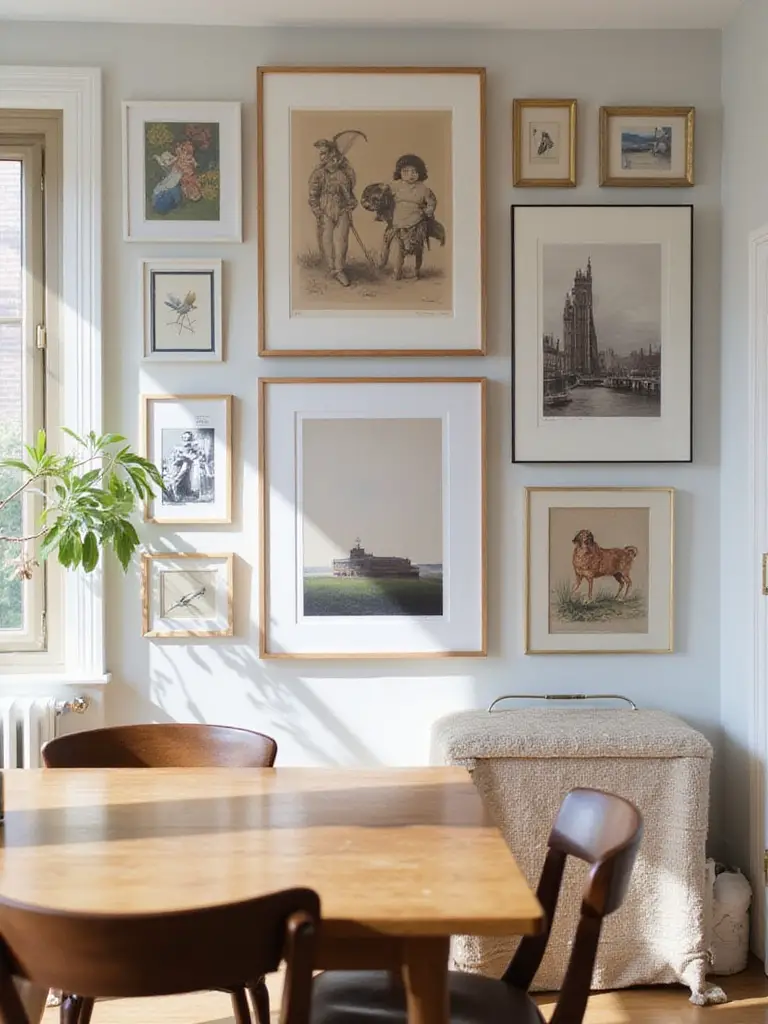
If a gallery wall feels too busy, go for one large statement piece. Find a local artist whose work you love. Blow up a stunning photograph you took on vacation. Or, one of my favorite tricks for a productive home: mount a large, beautifully framed chalkboard. You can write menus on it, leave messages for your family, or let the kids go wild. It’s functional, interactive, and constantly changing—the definition of a living wall.
Layering Accessories & Elevating Atmosphere
Okay, the bones of your room are in place. The table, chairs, lighting, and storage are all working together. Now comes the magic. This is the layering, the part that adds softness, texture, and personality. It’s like adding the herbs, spices, and a final drizzle of good olive oil to a dish—it brings everything together and makes it sing.
11. Anchor Your Dining Area with an Appropriately Sized Area Rug
Here’s the single biggest mistake people make with dining room rugs: they buy one that’s too small. The rule is simple: all four legs of a chair should stay on the rug, even when it’s pulled out from the table. That means you need a rug that extends at least 24 inches (I prefer 30) beyond the edge of your table on all sides. A small rug looks like a postage stamp, it makes the room feel cramped, and it’s a functional nightmare—chairs are constantly getting snagged on the edge.
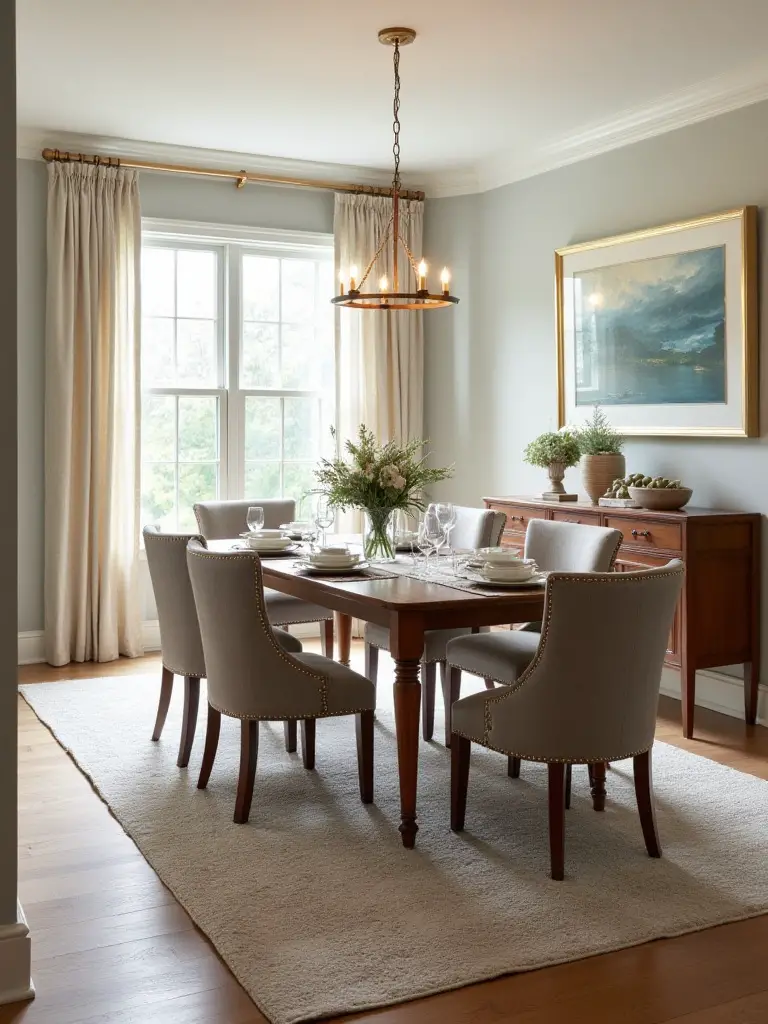
A properly sized rug works like magic. It defines the dining area, especially in an open-concept space, making it feel like its own intentional “room.” It absorbs sound, which is a huge plus in a room with lots of hard surfaces. And it adds a layer of color, texture, and warmth that instantly makes the space feel cozier and more complete. For a high-traffic, spill-prone area like a dining room, I love natural fiber rugs like jute or sisal, or durable, low-pile wool rugs that are easy to clean.
With the floor feeling cozy, let’s turn our attention back to the table itself.
12. Create Versatile Table Centerpieces for Every Occasion
Forget fussy, static centerpieces. Your table is a living surface that should change with the seasons and your life. The best centerpieces are the ones that are useful, natural, and easy to switch up. My secret weapon? A beautiful wooden bowl or a simple ceramic tray that lives on the table full-time. This is your foundation.
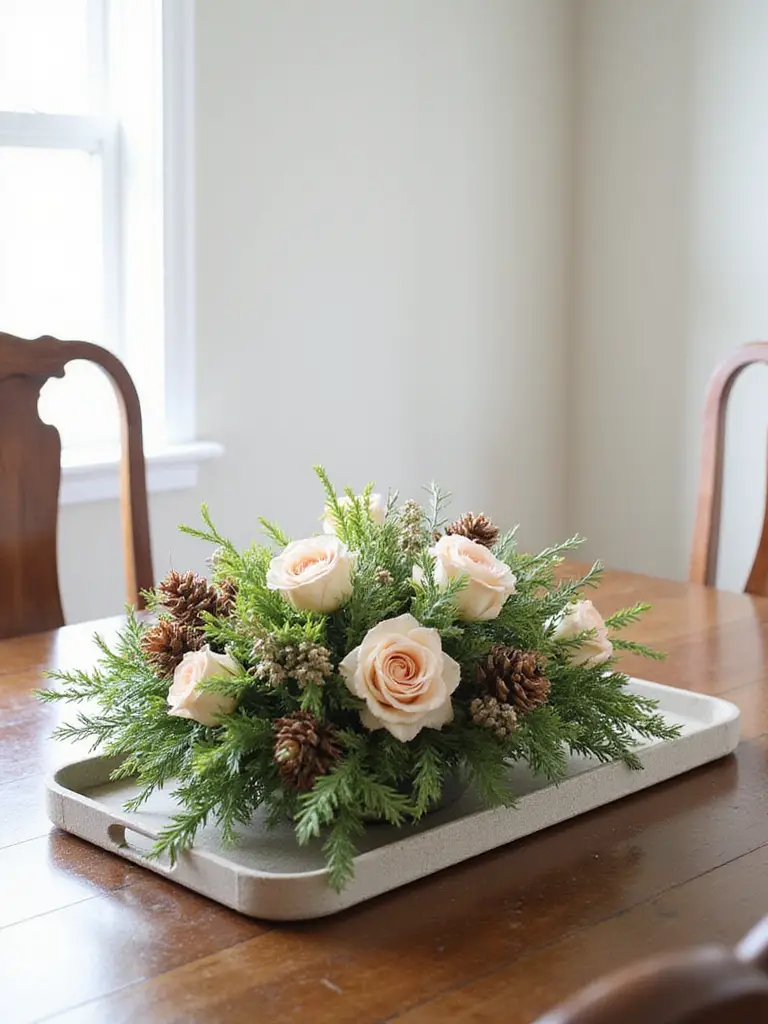
In the summer, fill it with lemons or tomatoes from your garden. In the fall, switch to mini pumpkins and gourds. For a dinner party, line up a few small pots of herbs like rosemary, thyme, and sage—they look beautiful, smell incredible, and guests can even snip a few leaves to add to their meal. This approach is sustainable, affordable, and connects your home to the rhythm of the seasons. It’s a centerpiece that’s alive.
From the table, let’s move to the windows and wrap the room in a little softness.
13. Soften the Space with Strategic Drapery and Window Treatments
Drapery is like a cozy sweater for your room. Even if you have blinds or shades for privacy, adding simple curtain panels can completely transform the feel of the space. They absorb sound, cutting down on that echo-y, clattery feeling you get in rooms with hardwood floors and lots of glass. They add a vertical line that can make your ceilings feel taller, and they bring in critical softness and texture.
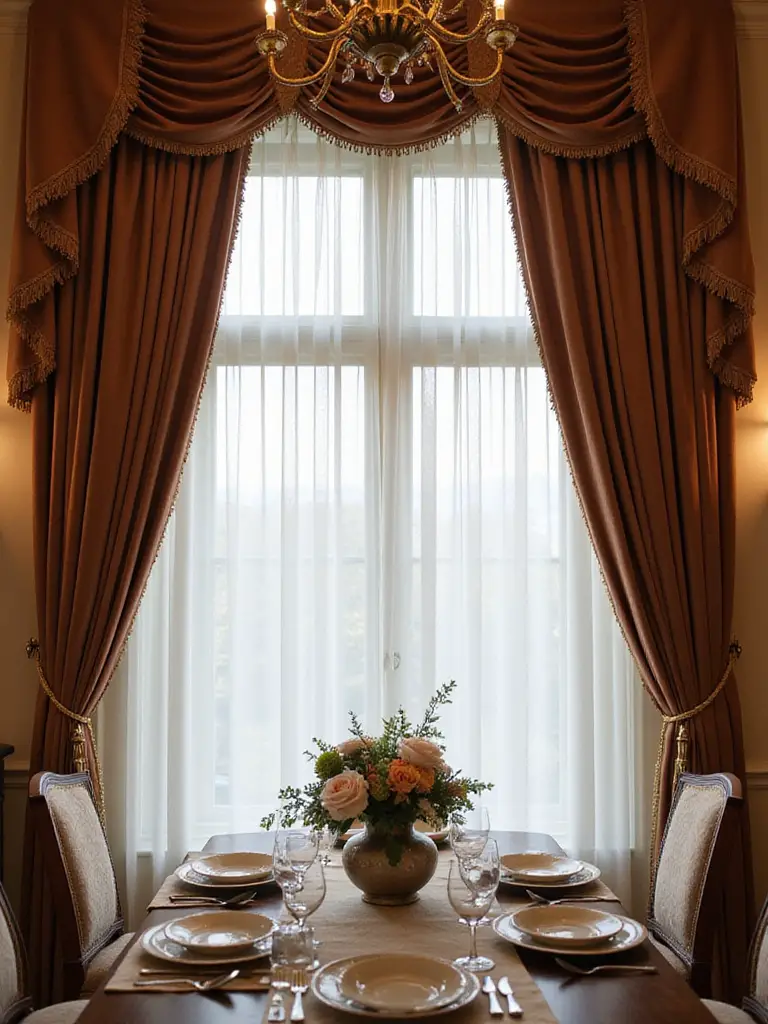
Here’s the pro trick: Hang your curtain rod high and wide. Mount it at least 4-6 inches above the window frame (as close to the ceiling as you can get away with) and let it extend 4-6 inches beyond the frame on either side. This makes your window look bigger and allows you to pull the curtains completely clear of the glass, maximizing your natural light when you want it. For a natural, breathable vibe, I love the look of simple linen or cotton panels that just “kiss” the floor.
Now for my favorite part: bringing the outdoors in.
14. Infuse Life and Color with Thoughtfully Placed Greenery
If you do nothing else from this list, do this. Plants are the fastest, most effective way to make a space feel alive. They are living sculptures that clean your air, boost your mood, and add a pop of organic color and texture that nothing else can replicate. A dining room is a perfect place for plants. A tall fiddle leaf fig in a corner adds architectural drama. A trailing pothos on top of a buffet softens the hard edges.
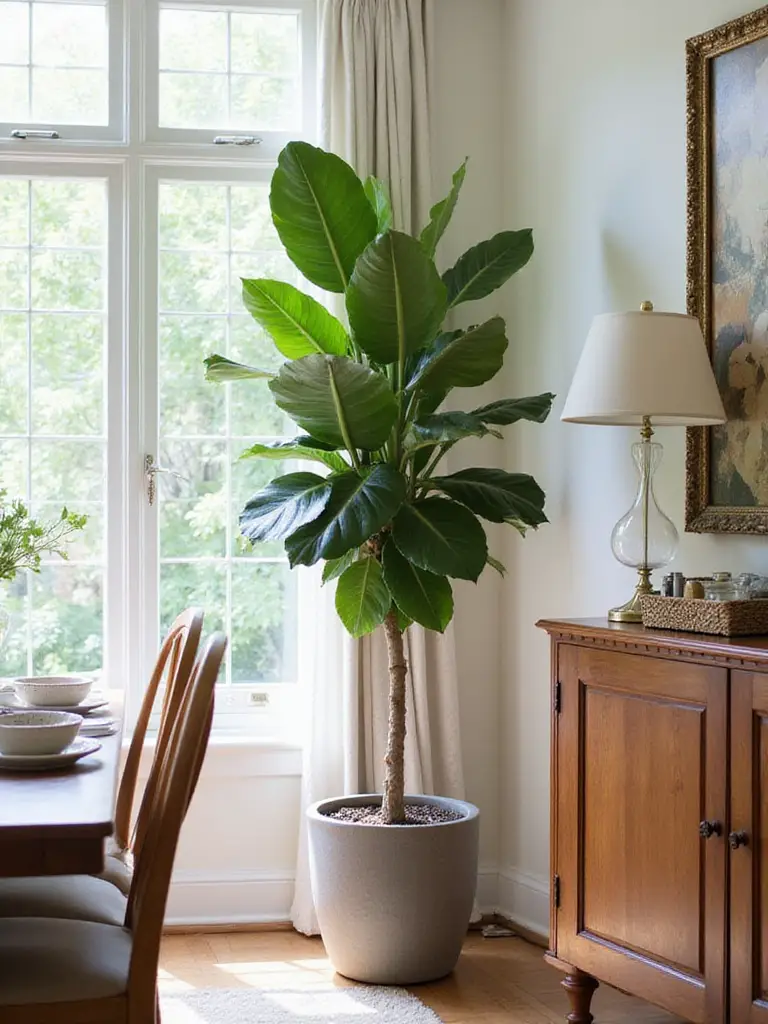
And don’t forget about productive plants! Your dining room windowsill could be home to a mini herb garden. Imagine snipping fresh basil for your pasta right at the table. It connects you directly to your food and makes the room an active part of your home’s ecosystem. If you’re a notorious plant killer, start easy. A snake plant or ZZ plant can tolerate almost any condition and still look amazing. They’re practically unkillable.
With life blooming around you, let’s refine the final details on the table.
15. Elevate Place Settings with Coordinated Dinnerware and Glassware
You don’t need a 12-piece set of fine china that you’re too scared to use. The secret to a beautiful table is having a versatile, hardworking core set of dishes. My advice is to invest in a simple, high-quality set of dinnerware in a neutral color like white, cream, or light grey. They’re the “little black dress” of your dining room—they go with everything.
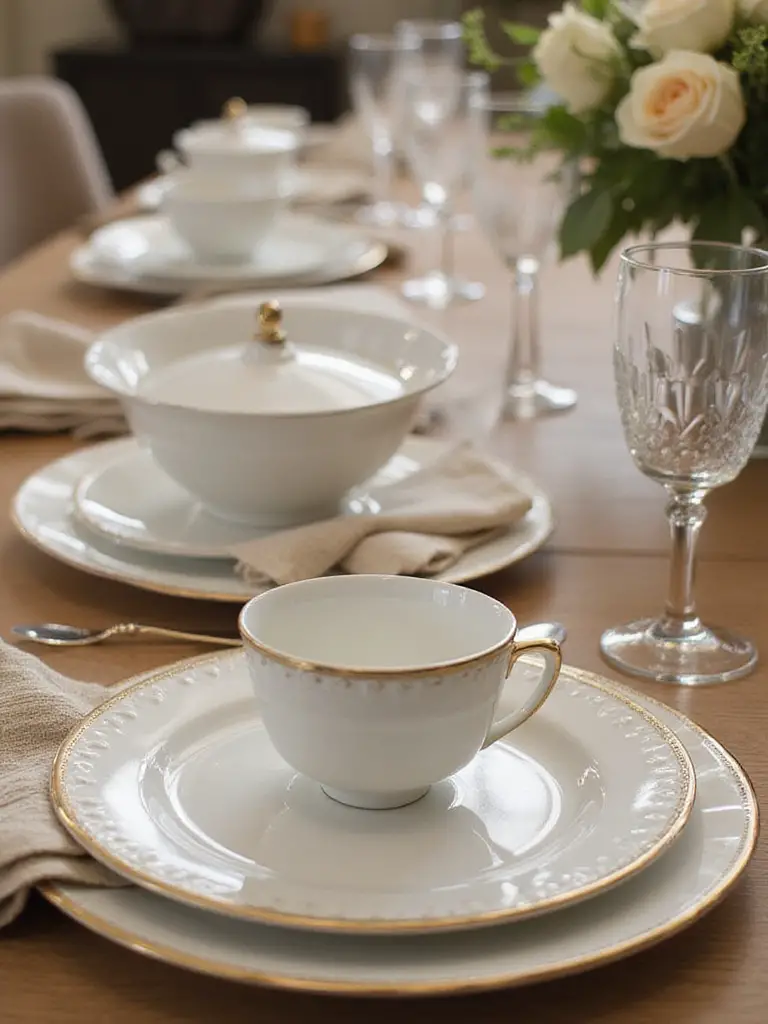
Then, you can have fun with the accessories. Buy fun, inexpensive cloth napkins in different colors and patterns. Find unique, maybe even mismatched, glassware at a thrift store. A simple white plate on a woven placemat with a colorful linen napkin instantly looks thoughtful and stylish. This “core + accent” strategy means you can change the entire feel of your table for any season or occasion without having to own six different sets of dishes. It’s smart, sustainable, and always chic.
Advanced Touches & Seamless Cohesion
You’ve built a beautiful, functional, living dining space. These final touches are what will elevate it from a great room to a truly integrated part of a wonderfully designed home. This is the fine-tuning that makes everything flow.
16. Use Mirrors Strategically to Amplify Light and Expand Space
Mirrors are pure magic. They are the oldest trick in the design book for a reason: they work. A large mirror can visually double the size of your space and bounce light around, making a dim room feel significantly brighter. It’s like adding another window. I had a client with a narrow, dark dining room in a city apartment. We hung a huge, simple mirror horizontally on the longest wall. It instantly made the room feel twice as wide and reflected the city lights at night, adding a layer of sparkle and energy.
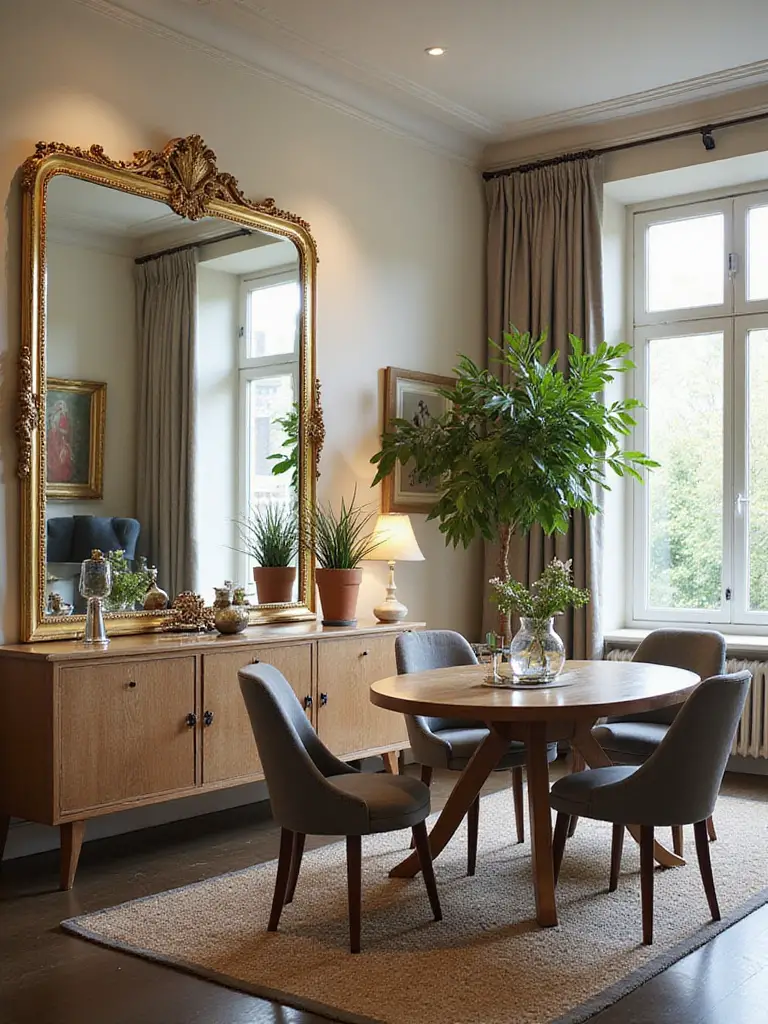
But here’s the crucial advice everyone forgets: mind what you’re reflecting. Before you hang that mirror, hold it up to the wall and check the reflection. You want it to reflect something beautiful—a window with a view of a tree, a great piece of art, the glow from your chandelier. You do not want it reflecting a cluttered corner or the doorway to a messy kitchen. A mirror doubles what it sees, so make sure it has a good view.
Now, let’s create a special spot just for hosting.
17. Curate a Dedicated Beverage or Bar Cart Zone for Entertaining
If you love to entertain, this is a game-changer. Creating a dedicated spot for drinks—whether it’s a glam bar cart, a small section of your buffet, or just a tray on a console table—streamlines your hosting and makes guests feel welcome. It moves the bottleneck out of your kitchen and frees you up from playing bartender all night. Guests can help themselves, and you can actually enjoy your own party.
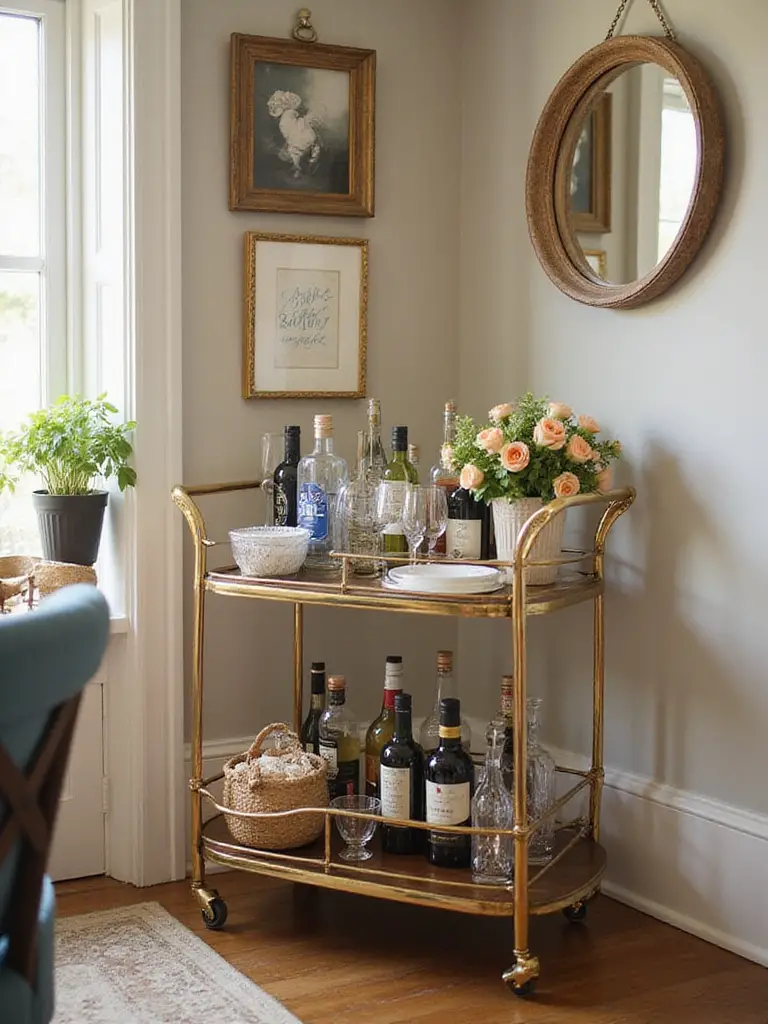
This “hospitality station” is a sign of a thoughtful host. Stock it with the basics: a few spirits, some mixers, an ice bucket, glasses, and a bottle opener. And here’s a tip that makes a huge difference: always include a non-alcoholic option. A beautiful pitcher of fruit-infused water or some sparkling cider makes everyone feel included and cared for, not just the drinkers.
From a dedicated zone, let’s zoom out to the entire home.
18. Ensure Seamless Flow and Cohesion with Adjacent Living Spaces
In modern homes, the dining room rarely lives in a vacuum. It often flows into the kitchen or living room. The key to making this feel cohesive instead of chaotic is to create a visual thread that ties the spaces together. You don’t want everything to be matchy-matchy, but you do want it to feel like it’s all part of the same family.
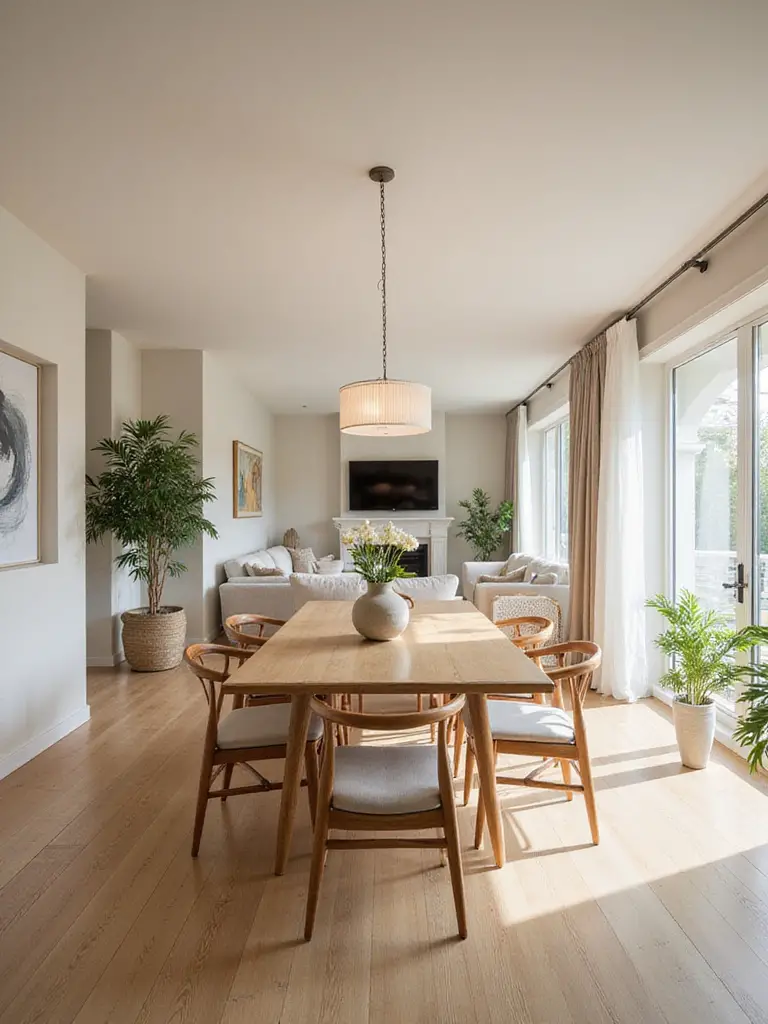
The simplest way to do this is with color and materials. Use the same paint color (or shades from the same color family) across the connecting walls. Repeat a material, like a specific wood tone or a metal finish (e.g., if you have black light fixtures in the kitchen, use a black-framed mirror in the dining room). These subtle echoes create a sense of harmony and make your entire home feel more spacious and intentionally designed. It’s about creating a conversation between the rooms.
Finally, every great room needs a hero.
19. Design an Intentional Focal Point to Capture Immediate Attention
When you walk into a room, your eye needs a place to land first. Without a clear focal point, a room can feel cluttered and confusing. This is the “hero” of your space—the one thing that grabs your attention and anchors the whole design. Don’t make things compete; pick one star of the show.
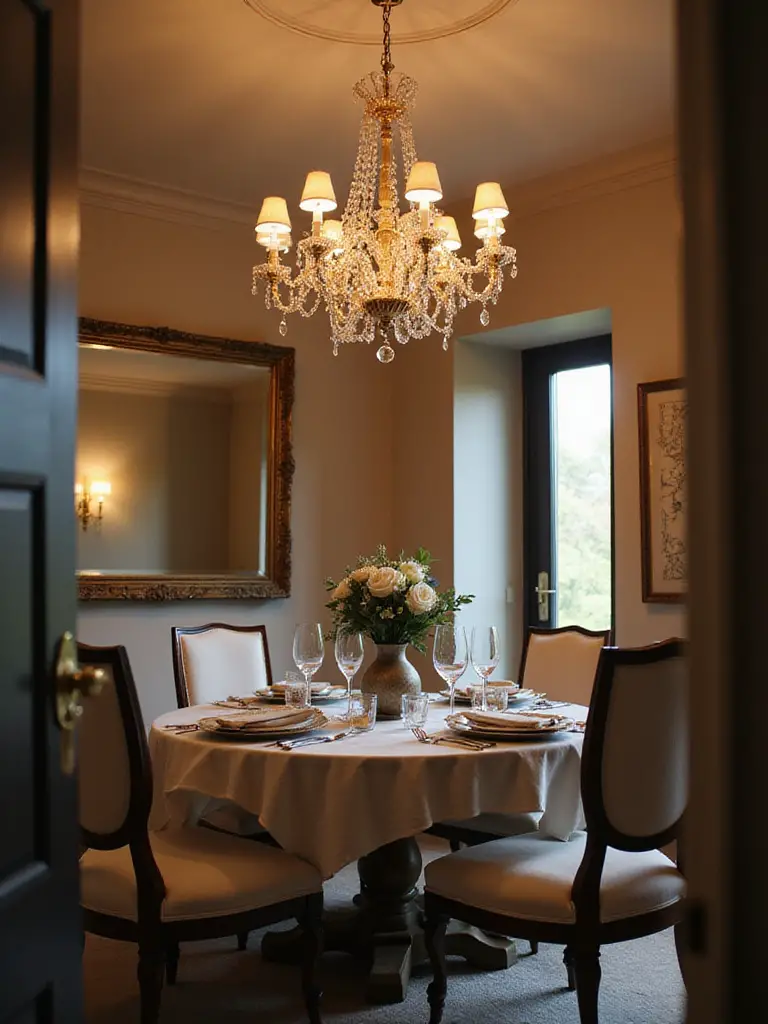
It could be a dramatic, oversized light fixture. It could be that statement art piece we talked about earlier. It could be a bold accent wall painted a deep, moody color or covered in beautiful wallpaper. In my own dining area, the focal point is a massive, living wall of shelves filled with trailing plants and cookbooks. Whatever you choose, make it intentional. Use lighting to highlight it. Arrange furniture to frame it. This single, strong statement will make the entire room feel more powerful, purposeful, and complete.
Conclusion
So there you have it. Your dining room doesn’t have to be a stuffy, untouchable space. It can and should be one of the most dynamic, vibrant, and productive rooms in your house. By focusing on how you actually live and making choices that support that, you create a space that’s not just for special occasions, but that makes every single day a little more special.
You’re not just decorating; you’re cultivating an environment. One that encourages connection, nourishes your family, and breathes life into your home. You’re building your own little ecosystem. So go ahead—start with that roll of painter’s tape, buy that plant, and reclaim your dining room. Create a space that you and your family will love to live in for years to come.
